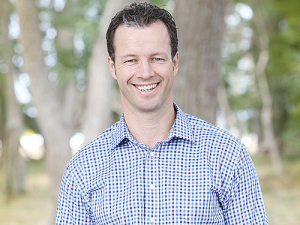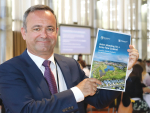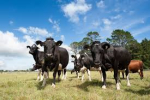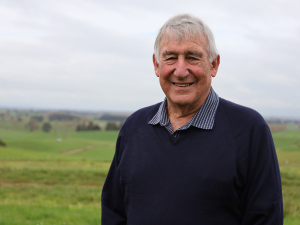In DairyNZ’s 2015-16 annual report chief executive Tim Mackle spoke of the team effort in the industry. Here is Mackle’s report.
As always during challenging times in our industry, farmers have stepped up to be their best and many have helped others get through.
This year DairyNZ boosted the Tactics programme, immediately visiting farmers to make sure they were aware of, and had access to, the right support. During these visits we came across farmers going above and beyond to help each other out.
We also provided more support for new farm owners and new sharemilkers, as they have more debt to manage. More than 420 dairy farmers volunteered as short-term mentors to provide support and advice on many subjects including animal management and personal wellbeing.
Throughout the Tactics campaign, we continue to work with the dairy companies, rural professionals, banks and other key groups like Federated Farmers, the Dairy Women’s Network and Rural Support Trusts.
We must maintain our competitive edge as an industry to drive efficiency throughout our businesses. To help meet this objective, DairyNZ refreshed its focus on pasture as the main feed source and our key competitive advantage. Whether a low, medium or high input system, home-grown pasture is the largest and most important feed resource a farmer has. A focus on pasture is the key to helping get through this prolonged low milk price, as it has in past downturns, and to underpin our future global competitiveness.
Our successes in the past year have included the two-year report on the Sustainable Dairying: Water Accord. The report proved that despite tough seasons, dairy farmers have made significant progress on meeting their environmental commitments. More than $1 billion has been spent over the past five years in environmental actions, including the biggest highlight -- 96% of dairy cattle being fenced off from waterways on farms; that equals 25,656km of waterways fenced.
Other highlights for DairyNZ this year include:
- the Forages for Reduced Nitrate Leaching project has identified that alternative pasture species and cover crops can achieve substantial reductions of nitrate leaching
- enabling 750 sustainable milk plans or consent process support for farmers from Northland to Southland
- helping 12,600 children visit dairy farms and learn how milk is produced through the Rosie’s World Find a Farmer programme
- 800 dairy farmers attended our biennial Farmers’ Forum at Mystery Creek, while 450 attended SIDE in Invercargill.
I acknowledge the significant effort of our dairy farmers in lifting performance to keep up with community and customer expectations. And I thank DairyNZ staff as we continue our team effort in working hard on our commitments to NZ dairy farmers.











